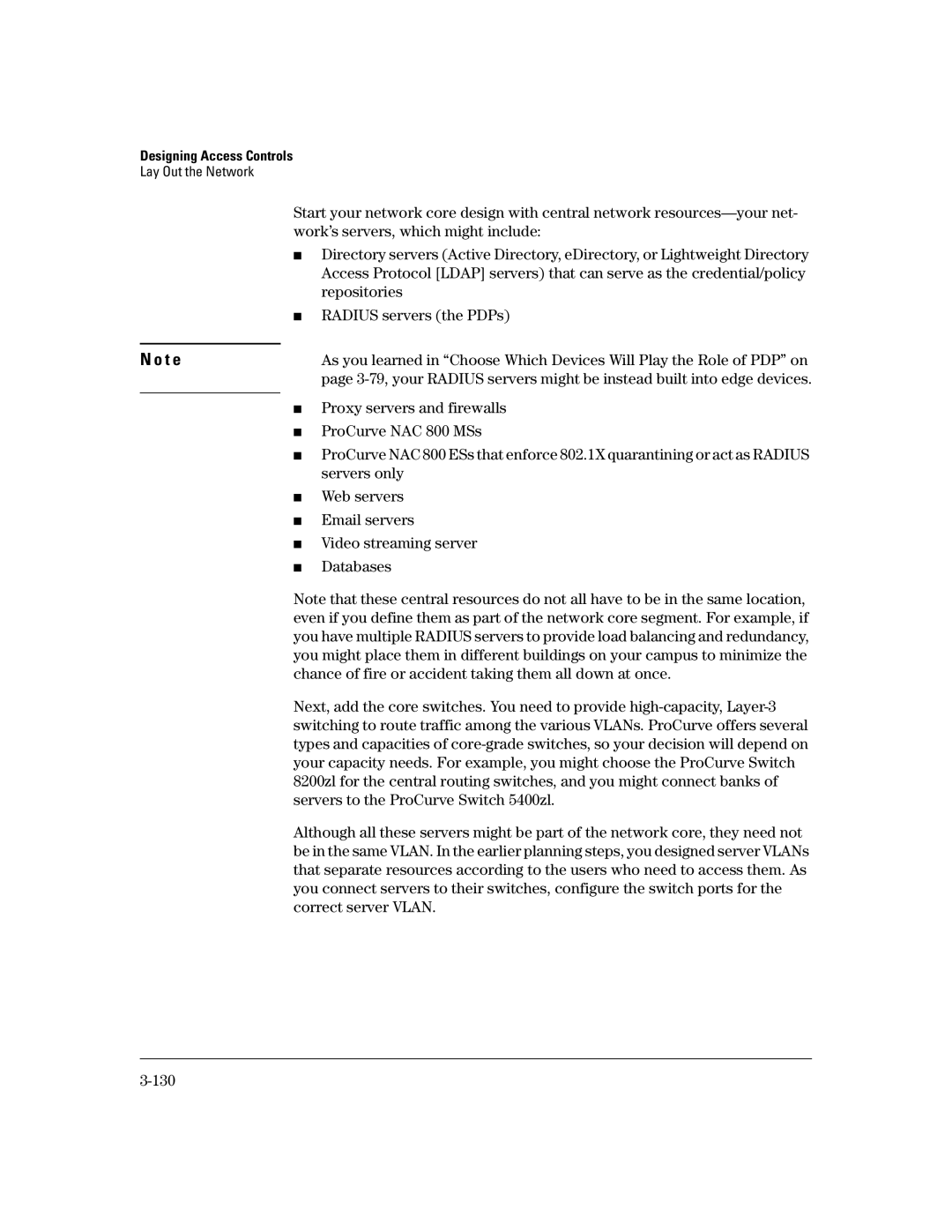
Designing Access Controls
Lay Out the Network
Start your network core design with central network
■Directory servers (Active Directory, eDirectory, or Lightweight Directory Access Protocol [LDAP] servers) that can serve as the credential/policy repositories
■RADIUS servers (the PDPs)
N o t e | As you learned in “Choose Which Devices Will Play the Role of PDP” on |
| page |
|
|
■Proxy servers and firewalls
■ProCurve NAC 800 MSs
■ProCurve NAC 800 ESs that enforce 802.1X quarantining or act as RADIUS servers only
■Web servers
■Email servers
■Video streaming server
■Databases
Note that these central resources do not all have to be in the same location, even if you define them as part of the network core segment. For example, if you have multiple RADIUS servers to provide load balancing and redundancy, you might place them in different buildings on your campus to minimize the chance of fire or accident taking them all down at once.
Next, add the core switches. You need to provide
Although all these servers might be part of the network core, they need not be in the same VLAN. In the earlier planning steps, you designed server VLANs that separate resources according to the users who need to access them. As you connect servers to their switches, configure the switch ports for the correct server VLAN.
